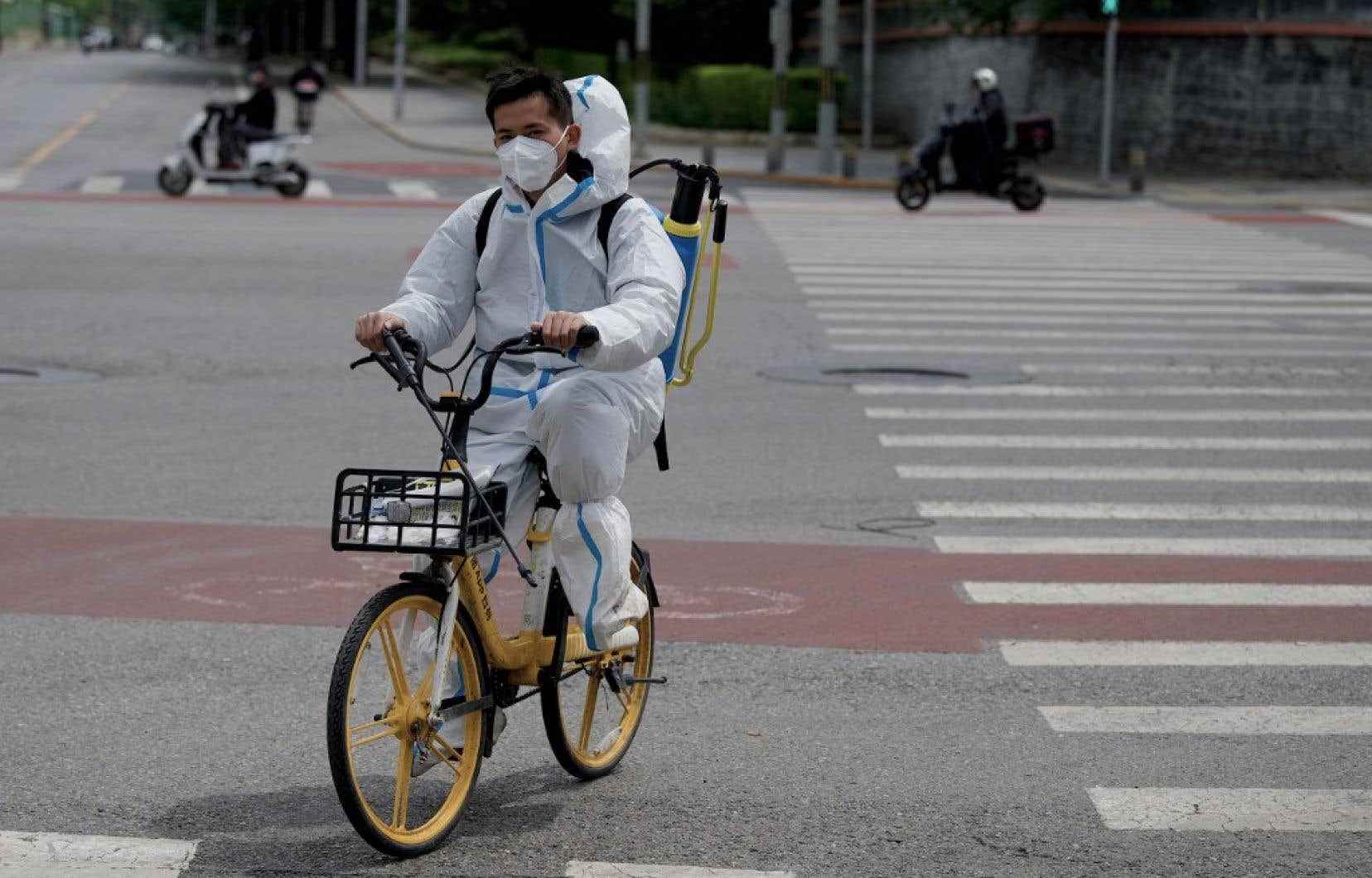Millions of Beijingers are working from home on Monday following a new anti-COVID tightening, giving the Chinese capital of 22 million people the appearance of a ghost town.
China has been facing its worst epidemic wave for two months since the initial outbreak in early 2020.
Even if the contamination figures remain minimal on a global scale, the authorities strictly apply their zero COVID policy and confine entire cities as soon as a few cases appear.
After Shanghai, the most populous city in the country confined since the beginning of April, Beijing has been subject to travel restrictions for a week and many public places (restaurants, cafes, sports halls, gymnasiums, etc.) are closed.
On Monday, authorities strictly limited access to non-essential services in the capital’s busiest and most populated district of Chaoyang, where some businesses must limit their normal workforce to 5%.
As a result, the bustling commercial district of Sanlitun, in eastern Beijing, was deserted on Monday morning. The usually very busy Apple store was ordered to close within minutes of opening.
“I don’t feel comfortable with so few people around me,” a cleaner named Wang told AFP, waiting to enter the restaurant that employs her.
“I am in charge of disinfecting, I cannot work from home”.
Minimize the risks
Beijing announced Monday 49 new cases of contamination for the last 24 hours.
The health situation in the capital is “serious and complicated”, noted to the press a city official, Xu Hejian, calling on residents not to leave Beijing, except for compelling reasons.
Screening tests of less than 48 hours will also be required to enter public places, in particular supermarkets, as well as office buildings.
On condition of anonymity, a finance employee told AFP that his company had asked him “to avoid going” home, in order to minimize the risk of infection in transport.
Elsewhere in Shanghai, the number of new contaminations fell to less than 4,000 on Monday, after having exceeded 25,000 at the end of April.
The current outbreak has also killed more than 500 people in Shanghai, according to an official report. The total for China has barely exceeded 5,000 officially since the start of the pandemic.
Some residents let their exasperation show after 40 days of confinement, sometimes marked by supply problems.
“mass exodus”
In the Zhuanqiao district over the weekend, residents clashed with officials dressed in full bodysuits, according to video posted on social media.
“Police acted as soon as possible to persuade onlookers to disperse and restore calm,” local authorities said.
“According to an investigation carried out on the spot, the troublemakers had enough food at home,” the same source assured.
China’s zero-COVID policy, which involves massive and repeated lockdowns and screenings of the population, is also proving costly for the country’s economy, experts have warned.
According to the American Chamber of Commerce, a number of member companies in Shanghai remain closed, while others are questioning their investments in China, given the restrictions.
The business world is “preparing for a massive exodus of foreign talent,” House Speaker Colm Rafferty warned.
